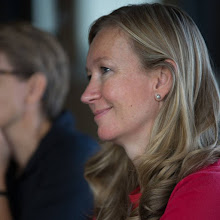Who comments on blogs about cancer?
While writing up the first of my papers about gender and blogging, I realised that it was not enough simply to look at whether the blogs written by women or written by men gained the most comments. I needed to look at who was commenting on the blogs too. So I went back through all the entries of the 20 cancer blogs, and calculated whether women or men commented most (and had another category for commenters who did not disclose a gender specific identity).
The first thing I discovered was that my original statistics were wrong, because so many of the men's blogs were commented on by 'junk' mailers. Once I had cleaned up the data, a very different picture emerged. Instead of an equal picture where the men's blogs got as much comment as the women's, the women's blogs were attracting over five times the amount of comment than did the men's.
The second thing that became clear was that gender couldn't be used as a bottom line explanation for commenting interation. While women posted the most comments overall, men posted more comments on blogs written by men and women posted more comments on blogs written by women. My explanation for this pattern is that the comments on the cancer blogs are markers of shared experience, offering or seeking support and guidance. Because some of the types of cancer the blog authors experience are gender specific, this gives rise to a gendered pattern of interaction. So it's the shared experience (which is gender specific) not the gender of the writer in itself which generates the pattern. However, it is really obvious from the statistics that the women's blogs are much much more interactive than the mens', and that the offline storytelling which supposedly enables shared experience to support friendship between women seems to be carried over into the blogosphere too.
So, the point I'm at is to reinforce the importance of considering content and context in the analysis of gender and CMC. What I've found is markedly different from the observations of Melissa Gregg's paper 'Posting with Passion' that Jess pointed out to me the other day. Just as with offline interaction, there are some general differences that carry over across content and context, but genre and discourse style can complicate that in various ways.
The first thing I discovered was that my original statistics were wrong, because so many of the men's blogs were commented on by 'junk' mailers. Once I had cleaned up the data, a very different picture emerged. Instead of an equal picture where the men's blogs got as much comment as the women's, the women's blogs were attracting over five times the amount of comment than did the men's.
The second thing that became clear was that gender couldn't be used as a bottom line explanation for commenting interation. While women posted the most comments overall, men posted more comments on blogs written by men and women posted more comments on blogs written by women. My explanation for this pattern is that the comments on the cancer blogs are markers of shared experience, offering or seeking support and guidance. Because some of the types of cancer the blog authors experience are gender specific, this gives rise to a gendered pattern of interaction. So it's the shared experience (which is gender specific) not the gender of the writer in itself which generates the pattern. However, it is really obvious from the statistics that the women's blogs are much much more interactive than the mens', and that the offline storytelling which supposedly enables shared experience to support friendship between women seems to be carried over into the blogosphere too.
So, the point I'm at is to reinforce the importance of considering content and context in the analysis of gender and CMC. What I've found is markedly different from the observations of Melissa Gregg's paper 'Posting with Passion' that Jess pointed out to me the other day. Just as with offline interaction, there are some general differences that carry over across content and context, but genre and discourse style can complicate that in various ways.
Labels: gender blog jess melissagregg commenting interaction
